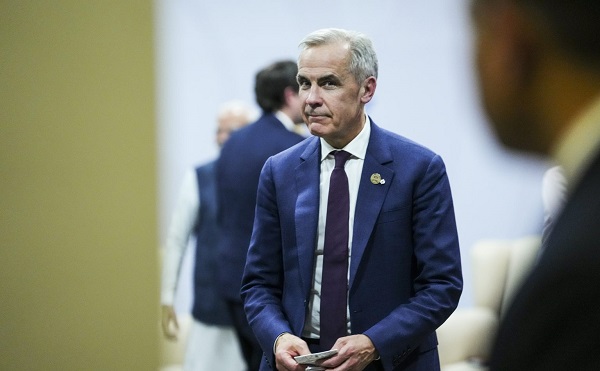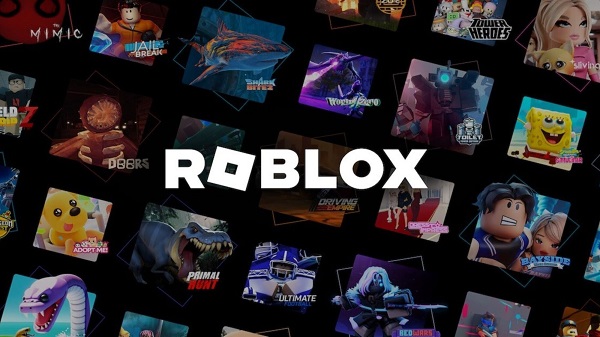Brownstone Institute
Europe’s New Digital Identity Wallet: Security or Tyranny?

From the Brownstone Institute
BY
Last Wednesday, Thierry Breton, EU’s Internal Market Commissioner, proudly announced on Twitter/X that he had struck a deal with MEPs to create a European “digital identity wallet,” which would permit all EU citizens to have “a secured e-identity for their lifetime.”
According to the European Commission’s own website, the European Digital Identity can be used for a whole range of transactions, including providing personal identification on and offline, showing birth certificates and medical certificates, opening a bank account, filing tax returns, applying for a university, storing a medical prescription, renting a car, or checking into a hotel.

Several people, including Dutch MEP Rob Roos, have raised concerns that a centralised digital ID could put Europeans’ privacy and mobility rights in jeopardy. A letter signed by over 500 “cybersecurity experts, researchers, and civil society organisations from across the globe,” warns that the proposed digital ID regulations will reduce rather than enhance citizens digital security.
But one of its leading architects, Internal Market Commissioner Thierry Breton, maintains that “the wallet has the highest level of both security & privacy,” while EU President Ursula von der Leyen insists that this is “a technology where we can control ourselves what data is used and how.” So either critics are overplaying civil liberty and privacy concerns, or the technology’s defenders are downplaying them. They cannot both be right.
In theory, a universal European digital ID could be programmed on a permanent basis in such a way that the citizen has full control over which parts of his or her “digital wallet” he shares at any given moment, and which he or she does not share. We might have little to worry about if a European digital ID was programmed now and forever by people who took privacy seriously and were not inclined to exploit the technology at their fingertips to “nudge” – or even “shove” – citizens into complying with their policies concerning disease control, non-discrimination, war propaganda, or climate change.
But in practice, it would be highly naive to assume that a programmable Europe-wide digital ID, controlled by a centralised bureaucracy would not, sooner or later, be exploited to “nudge” (or shove) people into complying with the policies that happen to be favoured by the “powers that be.”
And it does not require a wild leap of imagination to envisage the sorts of ways a European digital ID could be leveraged to erode the equality and freedom of Europeans, since the very same individuals that are the public face of this digital ID initiative were the ones who set in motion the most pervasive system of bio-surveillance in the history of Europe, namely the so-called “Covid digital certificates.”

The operation of the Covid digital certificates, which was approved by both the European Commission (the same one now pushing for a digital ID system) and the European Parliament, can give us a fairly clear idea of the uses to which European technocrats are likely to put a digital ID system, if given the chance.
The Covid digital certificate was used to compel citizens who had not received a Covid vaccine within a certain time period to obtain a costly and inconvenient Covid test every time they crossed a European border, and was even used to deny entry to unvaccinated citizens at cultural and recreational venues across Europe. In other words, the Covid digital certificate served as a mechanism for coercing citizens into injecting a certain medication into their bloodstream, and created a two-tier society, in which the unvaccinated were treated as a new social and political underclass.
Now, imagine if a centrally controlled European digital certificate was offered to all European citizens as a tool for accessing a wide range of services, from banking, air travel and hotel stays to car rentals, access to recreational venues, and access to online digital services. Initially, presumably the certificate would be optional and citizens could use other methods for validating their identity. Then, under the pretext of enhancing citizens’ “security,” the certificate might very well become obligatory for an increasing number of transactions.
The next step would be to gradually expand the information contained on the certificate, and use the certificate as a way to deny or approve citizens’ access to certain services based on their spending habits, their vaccination status, or their “social credit” score. Of course, this is not something we can be 100% certain will happen. But the recent implementation of vaccine apartheid in Europe should disabuse us of any illusion that Europe’s political leadership are committed to respecting and defending our civil liberties or our equal access to public amenities and services.
Politicans like Thierry Breton and Ursula von der Leyen, and those MEPs and member state goverments that cheered them on during the pandemic, were prepared to treat citizens like cattle or disease vectors to be vaccinated and tested en masse, with scant regard for their personal medical history and risk factors. It is surely only a matter of time before people with this sort of contempt for individual liberty would be inclined to take advantage of a technology like a universal digital ID as a lever to control people’s private choices with a view to advancing their own careers and policy goals.
Quite a few citizens said “no” to an experimental vaccine, and quite a few citizens still question the scientific and political rationale for imposing burdensome carbon taxes, forcibly expropriating farmland based on climate directives, living in “15 minute cities,” making space for transgender ideology in their hospitals and classrooms, or abstaining from whatever the powers that be deem to be “hate speech.”
What better method to induce public compliance with unpopular or controversial public policies and laws than to reward compliance with enhanced mobility and enhanced access to social amenities and services, and punish non-compliance with reduced mobility and reduced access to services and amenities? Isn’t that exactly what the digital Covid certificate, a brainchild of the same Commission, did?
Obviously, advocates of a European digital ID will publicly claim they are only interested in promoting the security of our transactions and protecting our privacy. But since these are the very same people who dare to claim that medical segregation and coercion via vaccine passports “reassures us of (the) spirit of an open Europe, a Europe without barriers,” their assurances regarding citizens’ privacy and liberties have no credibility whatsoever.
Republished from the author’s Substack
Brownstone Institute
Bizarre Decisions about Nicotine Pouches Lead to the Wrong Products on Shelves

From the Brownstone Institute
A walk through a dozen convenience stores in Montgomery County, Pennsylvania, says a lot about how US nicotine policy actually works. Only about one in eight nicotine-pouch products for sale is legal. The rest are unauthorized—but they’re not all the same. Some are brightly branded, with uncertain ingredients, not approved by any Western regulator, and clearly aimed at impulse buyers. Others—like Sweden’s NOAT—are the opposite: muted, well-made, adult-oriented, and already approved for sale in Europe.
Yet in the United States, NOAT has been told to stop selling. In September 2025, the Food and Drug Administration (FDA) issued the company a warning letter for offering nicotine pouches without marketing authorization. That might make sense if the products were dangerous, but they appear to be among the safest on the market: mild flavors, low nicotine levels, and recyclable paper packaging. In Europe, regulators consider them acceptable. In America, they’re banned. The decision looks, at best, strange—and possibly arbitrary.
What the Market Shows
My October 2025 audit was straightforward. I visited twelve stores and recorded every distinct pouch product visible for sale at the counter. If the item matched one of the twenty ZYN products that the FDA authorized in January, it was counted as legal. Everything else was counted as illegal.
Two of the stores told me they had recently received FDA letters and had already removed most illegal stock. The other ten stores were still dominated by unauthorized products—more than 93 percent of what was on display. Across all twelve locations, about 12 percent of products were legal ZYN, and about 88 percent were not.
The illegal share wasn’t uniform. Many of the unauthorized products were clearly high-nicotine imports with flashy names like Loop, Velo, and Zimo. These products may be fine, but some are probably high in contaminants, and a few often with very high nicotine levels. Others were subdued, plainly meant for adult users. NOAT was a good example of that second group: simple packaging, oat-based filler, restrained flavoring, and branding that makes no effort to look “cool.” It’s the kind of product any regulator serious about harm reduction would welcome.
Enforcement Works
To the FDA’s credit, enforcement does make a difference. The two stores that received official letters quickly pulled their illegal stock. That mirrors the agency’s broader efforts this year: new import alerts to detain unauthorized tobacco products at the border (see also Import Alert 98-06), and hundreds of warning letters to retailers, importers, and distributors.
But effective enforcement can’t solve a supply problem. The list of legal nicotine-pouch products is still extremely short—only a narrow range of ZYN items. Adults who want more variety, or stores that want to meet that demand, inevitably turn to gray-market suppliers. The more limited the legal catalog, the more the illegal market thrives.
Why the NOAT Decision Appears Bizarre
The FDA’s own actions make the situation hard to explain. In January 2025, it authorized twenty ZYN products after finding that they contained far fewer harmful chemicals than cigarettes and could help adult smokers switch. That was progress. But nine months later, the FDA has approved nothing else—while sending a warning letter to NOAT, arguably the least youth-oriented pouch line in the world.
The outcome is bad for legal sellers and public health. ZYN is legal; a handful of clearly risky, high-nicotine imports continue to circulate; and a mild, adult-market brand that meets European safety and labeling rules is banned. Officially, NOAT’s problem is procedural—it lacks a marketing order. But in practical terms, the FDA is punishing the very design choices it claims to value: simplicity, low appeal to minors, and clean ingredients.
This approach also ignores the differences in actual risk. Studies consistently show that nicotine pouches have far fewer toxins than cigarettes and far less variability than many vapes. The biggest pouch concerns are uneven nicotine levels and occasional traces of tobacco-specific nitrosamines, depending on manufacturing quality. The serious contamination issues—heavy metals and inconsistent dosage—belong mostly to disposable vapes, particularly the flood of unregulated imports from China. Treating all “unauthorized” products as equally bad blurs those distinctions and undermines proportional enforcement.
A Better Balance: Enforce Upstream, Widen the Legal Path
My small Montgomery County survey suggests a simple formula for improvement.
First, keep enforcement targeted and focused on suppliers, not just clerks. Warning letters clearly change behavior at the store level, but the biggest impact will come from auditing distributors and importers, and stopping bad shipments before they reach retail shelves.
Second, make compliance easy. A single-page list of authorized nicotine-pouch products—currently the twenty approved ZYN items—should be posted in every store and attached to distributor invoices. Point-of-sale systems can block barcodes for anything not on the list, and retailers could affirm, once a year, that they stock only approved items.
Third, widen the legal lane. The FDA launched a pilot program in September 2025 to speed review of new pouch applications. That program should spell out exactly what evidence is needed—chemical data, toxicology, nicotine release rates, and behavioral studies—and make timely decisions. If products like NOAT meet those standards, they should be authorized quickly. Legal competition among adult-oriented brands will crowd out the sketchy imports far faster than enforcement alone.
The Bottom Line
Enforcement matters, and the data show it works—where it happens. But the legal market is too narrow to protect consumers or encourage innovation. The current regime leaves a few ZYN products as lonely legal islands in a sea of gray-market pouches that range from sensible to reckless.
The FDA’s treatment of NOAT stands out as a case study in inconsistency: a quiet, adult-focused brand approved in Europe yet effectively banned in the US, while flashier and riskier options continue to slip through. That’s not a public-health victory; it’s a missed opportunity.
If the goal is to help adult smokers move to lower-risk products while keeping youth use low, the path forward is clear: enforce smartly, make compliance easy, and give good products a fair shot. Right now, we’re doing the first part well—but failing at the second and third. It’s time to fix that.
Addictions
The War on Commonsense Nicotine Regulation

From the Brownstone Institute
Cigarettes kill nearly half a million Americans each year. Everyone knows it, including the Food and Drug Administration. Yet while the most lethal nicotine product remains on sale in every gas station, the FDA continues to block or delay far safer alternatives.
Nicotine pouches—small, smokeless packets tucked under the lip—deliver nicotine without burning tobacco. They eliminate the tar, carbon monoxide, and carcinogens that make cigarettes so deadly. The logic of harm reduction couldn’t be clearer: if smokers can get nicotine without smoke, millions of lives could be saved.
Sweden has already proven the point. Through widespread use of snus and nicotine pouches, the country has cut daily smoking to about 5 percent, the lowest rate in Europe. Lung-cancer deaths are less than half the continental average. This “Swedish Experience” shows that when adults are given safer options, they switch voluntarily—no prohibition required.
In the United States, however, the FDA’s tobacco division has turned this logic on its head. Since Congress gave it sweeping authority in 2009, the agency has demanded that every new product undergo a Premarket Tobacco Product Application, or PMTA, proving it is “appropriate for the protection of public health.” That sounds reasonable until you see how the process works.
Manufacturers must spend millions on speculative modeling about how their products might affect every segment of society—smokers, nonsmokers, youth, and future generations—before they can even reach the market. Unsurprisingly, almost all PMTAs have been denied or shelved. Reduced-risk products sit in limbo while Marlboros and Newports remain untouched.
Only this January did the agency relent slightly, authorizing 20 ZYN nicotine-pouch products made by Swedish Match, now owned by Philip Morris. The FDA admitted the obvious: “The data show that these specific products are appropriate for the protection of public health.” The toxic-chemical levels were far lower than in cigarettes, and adult smokers were more likely to switch than teens were to start.
The decision should have been a turning point. Instead, it exposed the double standard. Other pouch makers—especially smaller firms from Sweden and the US, such as NOAT—remain locked out of the legal market even when their products meet the same technical standards.
The FDA’s inaction has created a black market dominated by unregulated imports, many from China. According to my own research, roughly 85 percent of pouches now sold in convenience stores are technically illegal.
The agency claims that this heavy-handed approach protects kids. But youth pouch use in the US remains very low—about 1.5 percent of high-school students according to the latest National Youth Tobacco Survey—while nearly 30 million American adults still smoke. Denying safer products to millions of addicted adults because a tiny fraction of teens might experiment is the opposite of public-health logic.
There’s a better path. The FDA should base its decisions on science, not fear. If a product dramatically reduces exposure to harmful chemicals, meets strict packaging and marketing standards, and enforces Tobacco 21 age verification, it should be allowed on the market. Population-level effects can be monitored afterward through real-world data on switching and youth use. That’s how drug and vaccine regulation already works.
Sweden’s evidence shows the results of a pragmatic approach: a near-smoke-free society achieved through consumer choice, not coercion. The FDA’s own approval of ZYN proves that such products can meet its legal standard for protecting public health. The next step is consistency—apply the same rules to everyone.
Combustion, not nicotine, is the killer. Until the FDA acts on that simple truth, it will keep protecting the cigarette industry it was supposed to regulate.
-

 International2 days ago
International2 days agoBoris Johnson Urges Ukraine to Continue War
-

 MAiD2 days ago
MAiD2 days agoHealth Canada suggests MAiD expansion by pre-approving ‘advance requests’
-

 Business1 day ago
Business1 day agoFederal major projects list raises questions
-

 Health2 days ago
Health2 days agoOrgan donation industry’s redefinitions of death threaten living people
-

 Great Reset2 days ago
Great Reset2 days agoRCMP veterans’ group promotes euthanasia presentation to members
-

 Artificial Intelligence2 days ago
Artificial Intelligence2 days agoGoogle denies scanning users’ email and attachments with its AI software
-

 COVID-191 day ago
COVID-191 day agoCrown seeks to punish peaceful protestor Chris Barber by confiscating his family work truck “Big Red”
-

 Business1 day ago
Business1 day agoBlacked-Out Democracy: The Stellantis Deal Ottawa Won’t Show Its Own MPs














